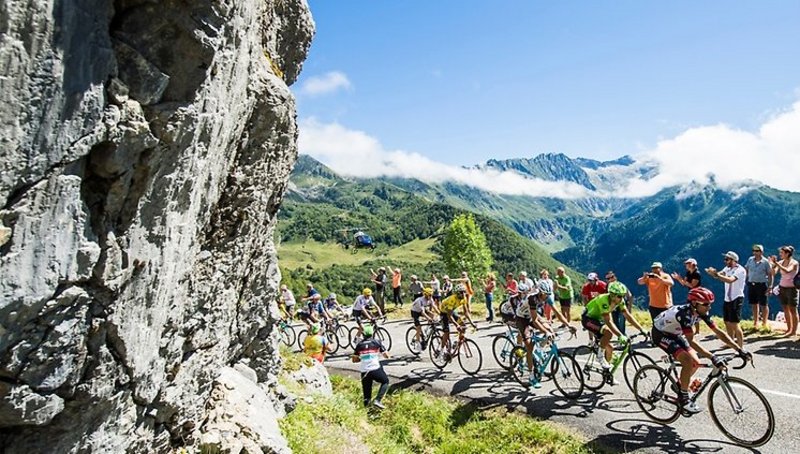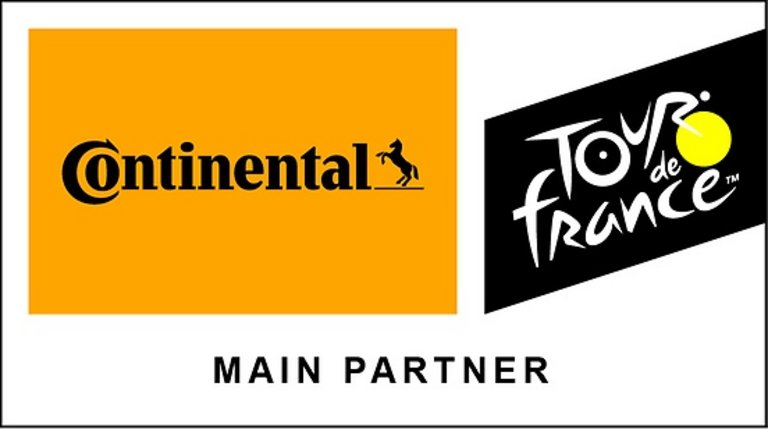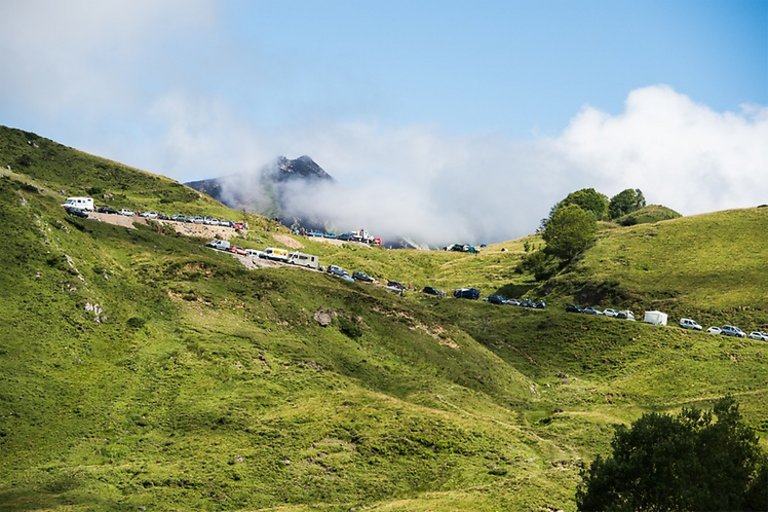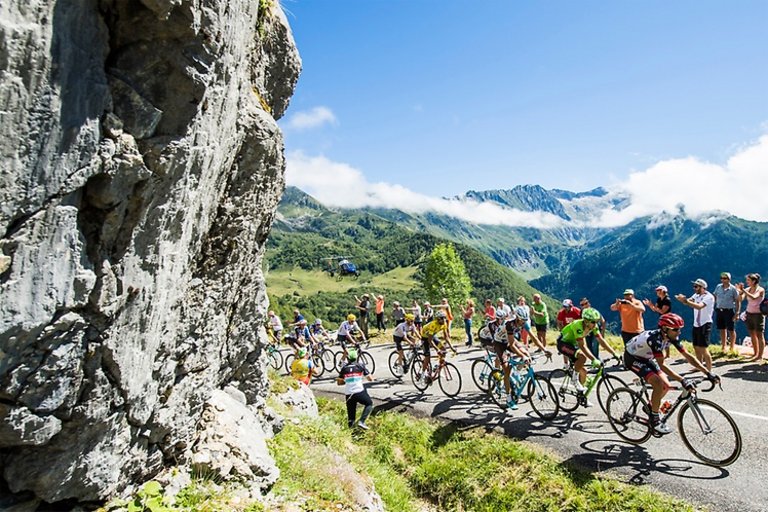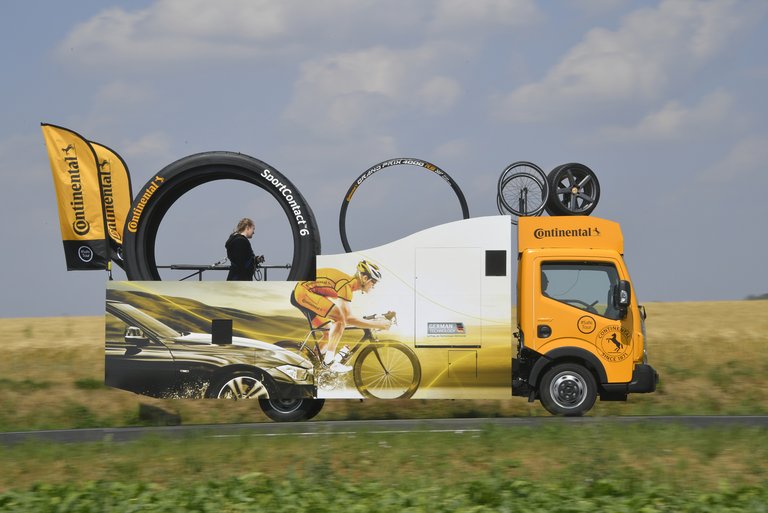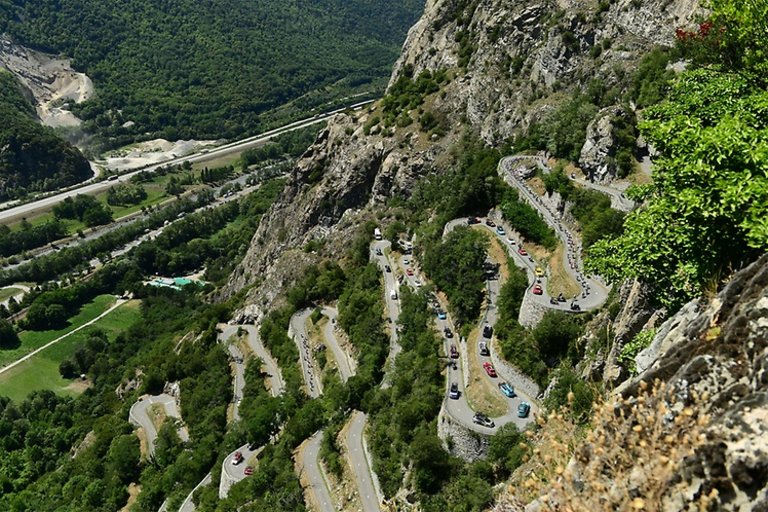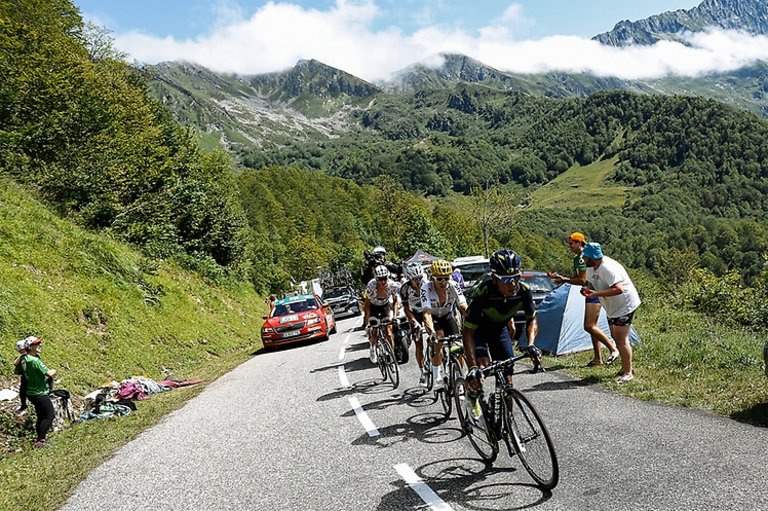Hard Times Are Coming: This Route Will Push the World’s Top Riders to the Limit
- Tour de France starts on Saturday, July 6 in Brussels
- Five of the toughest mountain stages within seven days
- The Tour arrives in Paris on July 28
If you were looking for a quote to accompany the three weeks between now and July 28 when the winner of the 106th edition of the Tour de France will be crowned on the Champs Elysées in Paris, you could do worse than turn to the ancient Greek poet Hesiod: “Before excellence the immortal gods have put sweat,” he wrote. “And long and steep is the way to it.” On this year’s tour, the key word is “steep”. Rarely have the top climbers had so much to look forward to as in this year’s Tour that takes in not one but two European countries, with the Grand Départ taking place in Belgium.
Ahead of the usual suspects among the Pyrennean and Alpine peaks that host a summit finish, this time around there will be some serious uphill stretches to master just a few days after the peleton leaves Brussels. Normally, week one is a playground for the sprinters, like last year, when the Tour got underway on an island in the Atlantic, and Western France provided a relatively flat playing field on which to warm up the leg muscles.
In all, the riders will have five demanding summit finishes to contend with - three of them at over 2,000 meters - and these are sure to separate the sheep from the (mountain) goats. By way of a prelude, the organizers have built in some early climbs this year, very early in fact, with stage six on July 11 leading from Mulhouse in the German/French/Swiss border region into the Vosges mountains and up to the wonderfully named La Planche des Belles Filles. This “Board of the Beautiful Girls” joins the “Ballon d’Alsace” as the first of the challenging mountain climbs in this year’s Tour, where the riders looking for glory in the general classification (GC) will get to show what they are made of. The next day will host the longest stage of the 2019 Tour, stretching out 230 kilometers from Belfort to Chalon-sur-Saône.
Backtracking for a moment to Belgium, though, the opening flat stage, starting and finishing in Brussels, is followed on July 7 by what the crowds who line the route always find one of the tastiest morsels: This is the team time trial that takes the riders on a 27-kilometer tour of the city, from the Royal Palace to the Atomium. It’s a real thrill to see and hear the teams swoosh by in paceline formation on their special time-trial bikes, a string of aerodynamic helmets pressed deep over the handlebars, searching for the ideal line to skim fractions of a second off their time. And even at this early stage, teams can steal a march over the competition, gaining seconds that can make all the difference in the individual rankings later on. The team time trial covers just 27 of the 3,460 kilometers that the finishers will complete in the coming three weeks, but those 27 are sure to be spectacular.
In the Champagne region, where the riders will be among the few who don’t stop to taste the brut and bubbly delights, as well as in Lorraine the organizers have set up what will be a couple of hard-fought sprint finishes. These are the opportunities the sprinters competing for the green jersey have been waiting for – a chance to outpace their rivals in a bunch sprint for the line. In Epernay, Nancy and Colmar, the lead-out men in the 176-strong field will be aiming to provide the best possible launchpad for the top sprinters in their respective teams. Then come the initial climbs as the riders enter the low mountains of the Vosges.
After a couple of hilly stages in the Massif Central, made to measure for the “baroudeurs” – the fighters capable of launching long-range attacks, there comes the first rest day on July 16 in Albi. Then it’s into the Pyrenees, where the stage could already be set for GC victory and defeat. First, though, there are 170 kilometers to cover from Saint-Etienne to Brioude on Sunday July 14, Bastille Day - France’s national holiday. Which in a nation of bike race fans means densely packed crowds lining the route. In keeping with tradition, on this day, Tour Director Christian Prudhomme will be joined in his trademark red car by the French president himself.
Another landmark date on this year’s Tour is July 19 – for two reasons: Firstly, it’s the 100th birthday of what must be the most famous item of clothing in the world of sport – the yellow jersey worn by the leading GC rider. And secondly, to mark the big day there will be a mega-tough individual time trial at Pau in the foothills of the Pyrenees. This picturesque town on the fringe of the mountain range that runs between France and Spain has witnessed many a battle in the Tour de France.
This year’s 27-kilometer individual time trial will be dotted with short but mean climbs that will favor the all-rounders. Anyone looking to ride into Paris in yellow will need to push himself to the limit in this battle against the clock or “contre la montre” to use the appealing French name for this particular exercise. It should provide a useful indicator of form as the riders head for a veritable “Festival of Giants” in the next few days.
Within the space of a week, they will be expected to master five mountain stages including five “hors categorie” (HC) climbs – the toughest on the tour. And three of the summit finishes are at over 2,000 meters. At such altitudes the field – like the air itself – starts to thin out. The onset of the peak punishment phase in this year’s Tour is marked by the Col du Tourmalet, rising to 2,115 meters. The second week of the Tour draws to a close with a stage from Limoux to Foix Prat d’ Albis before everyone enjoys a day of rest in Nîmes on July 22.
Here the remaining saddle-sore heroes get to recharge their batteries for the two remaining arduous mountain stages in the Alps. These will finally determine who finishes where in the general classification, before the “Tour d’honneur” sees the riders coast amicably from Rambouillet to Paris on July 28. Before then, the field has to tackle the “three executioners” of the final days in the shape of Col d’Izoard, Col de Galibier and Col de la Madeleine. And with the summit finishes in Tignes (July 26, 2,113 meters) and Val Thorens (July 27, 2365 meters) the suffering finally reaches its exhausting climax.
Rarely has the route selected for a Tour de France been designed to delay the decisive moments for overall victory quite so long, flinging the riders at such daunting mountain stages in the last two days before the traditional sprint along the Champs Elysées. But while the virtual exclusion of Western France and the familiar flat stages along the Atlantic coast means further to travel for British fans, those coming across France’s eastern borders will face shorter trips, which could well tempt them away from the TV coverage and out to line the route.

Klaus Engelhart
Press Spokesman
Passenger Car Tires / Germany, Austria, Switzerland
- +49 511 938-2455
